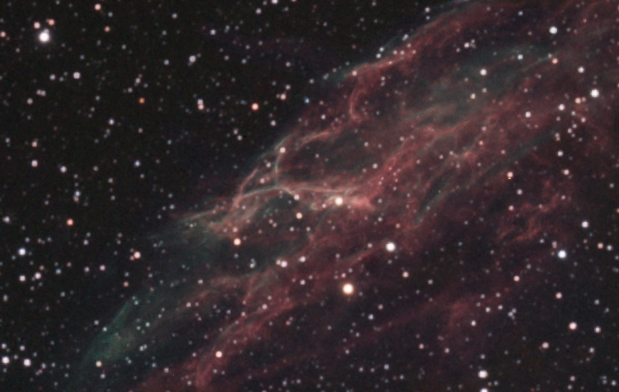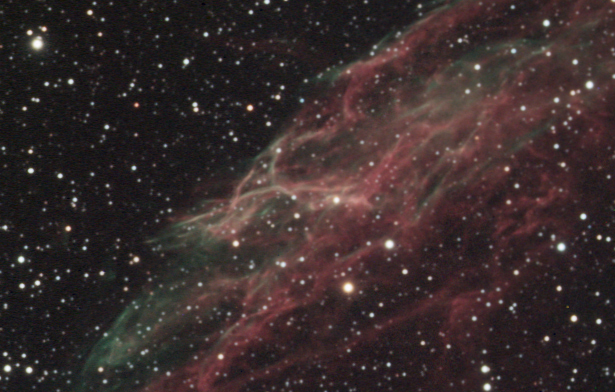This test compares the two cameras in regards to accurately record a color image that contains H-beta (blue) and O-III (green) emission lines as well as H-alpha (red). A 2" Baader UV/IR filter was used with the XCM to prevent any effects from NIR emissions. The red filter used with the XM is IR blocked so the Baader filter was not used. No light pollution filter was used so as not to skew the filter characteristics of the two cameras.
Below are the spectral curves of the Bayer color sensor and the mono sensor w/Custom Scientific filters. The loss in QE of the Bayer matrix sensor requires longer exposures be taken. Also note the narrower and peaky bandwidth of the R,G&B XCM curves when compared to the broader bandwidth of the R,G&B filters used with the XM. This will lead to a less accurate spectral curve in some objects that have more continuum light sources. The XCM Bayer spectral response has a significant shift in the green curve that deviates far from the 496.9-500.7nm O-III peaks which results in a substantial loss of QE at that important peak. That's too bad because 50% of the color pixels are green! The blue H-beta curve is close to the 480nm emission line. The H-beta curve is almost at the 486nm peak with slightly less gain when compared to the XM w/filters, but far better than the XCM O-III loss. This difference in the O-III and H-beta curves on the XCM sensor accounts for the blue cast in the color image.
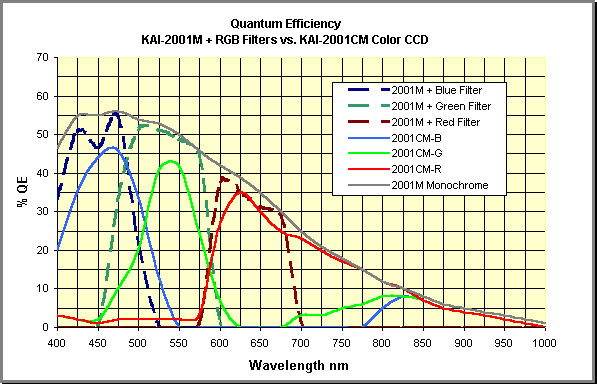
Image courtesy of Santa Barbara Instrument Group
The following examples are crops of NGC6992 the Veil Nebula. Using Images Plus, calibration, stacking and equal DDP levels were applied with no noise reduction or attempts to clean up hot pixels or reduce gradients. Exposure times are 180 minutes for the XCM and 60 minutes for each of the RGB filters of the XM totaling 180 minutes. A G2 star weight was applied to the XM RGB color set during color combine. These 2 examples display the initial color differences between the XM and XCM images. The XM version shows a more natural O-III emission color though slightly on the green side vs. the XCM's almost all blue color. This blue color is common with color cameras using the Bayer matrix sensor primarily due to the spectral curves of the matrix characteristics. The XM brightness of the nebula structure is also more apparent due to the better QE of the mono w/filters. Finer details in the wispy structures are better defined in the XM version. Additional processing with the XCM version will be needed to highlight the details further.
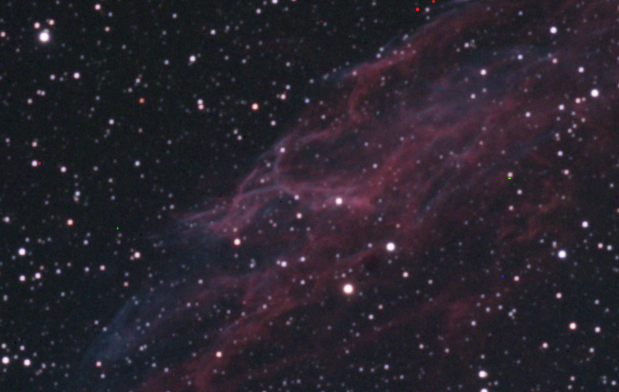
Crop of NGC6992 taken with the XCM camera
ST2000-XCM color data details:- Date - 12/06/2007 06:45PM
- Temp - 26F -3C
- Humidity - 52%
- Dew - 14F -10C
- Visibility - 10 miles 16.1Km
- Wind - 5 mph 10 Km/h
- Exposure - 18 X 10 minutes Bin 1x1
- Sigma Average Combine
- CCD Temp -25C
- OTA - TMB130SS APO w/Baader UV/IR filter
- Image scale 1.68 arc seconds/pixel
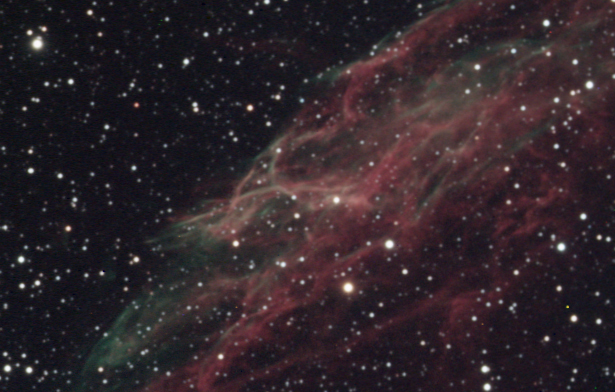
Crop of NGC6992 taken with the XM camera
ST2000-XM color data details:- Date - 11/30/2007 07:53PM
- Temp - 39F 6C
- Humidity - 53%
- Dew - 23F -5C
- Visibility - 10 miles 16.1 Km
- Wind - 9 mph 14 Km/h
- Exposure - (R)6X10 (G) 6X10 (B) 6X10 minutes Bin 1x1
- Sigma Average Combine
- CCD Temp -25C
- OTA - TMB130SS APO
- Image scale 1.68 arc seconds/pixel
